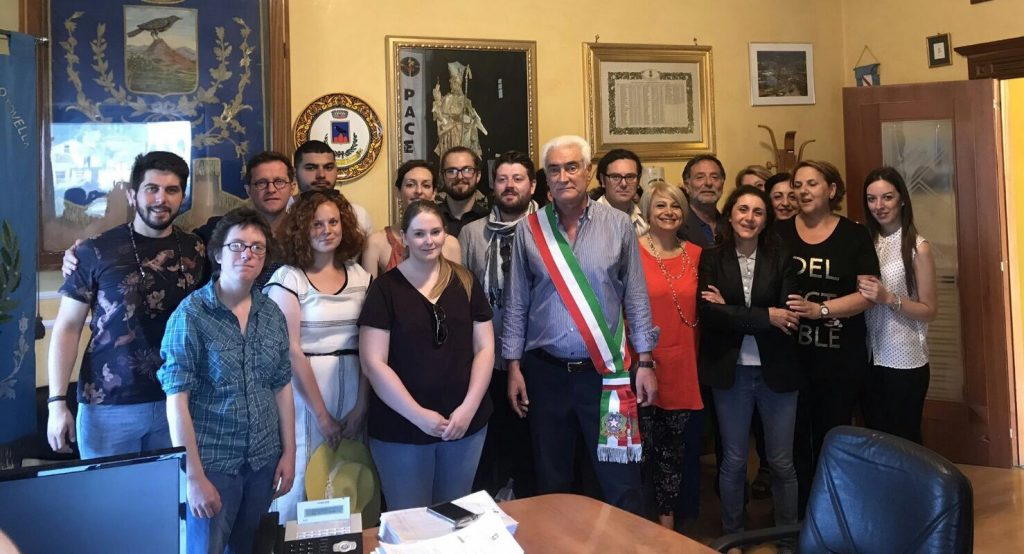My UG Research Scholarship project concerned archaeological and heritage related research into the Longobard Church of Sant’Ambrogio in the town of Montecorvino Rovella.
First and foremost I don’t think anything quite prepared me for the magnitude of this project and I’d like to thank both Francesca Dell’Acqua and Dan Reynolds as well as the University for giving me this opportunity. I already had a natural affinity for this opportunity given its grounding in western Christianity and the early middle ages. However upon arriving in Italy with the rest of the team and meeting our Italian correspondents I saw how this project went further than history and indeed I could tell from the outset how much it meant to the people of Montecorvino Rovella. Despite initially being unsure of how the project would pan out for me personally, I was surprised at just how much I enjoyed this experience and how much I learned, both in terms of knowledge and understanding as well as about myself.
Interestingly, my initial objectives were generally centred around heritage (interacting with the Montecorvino locals) but once I arrived in Italy I found myself wanting to be involved in as much of the project as possible. This opened the door for me to not only participate with the interviewing process but also the archaeological operation. The primary interest of this project was the church itself and the fresco inside, likely of 9th century origin, but my main role concerned surveying the area around the church to see if this would bring about further understanding. For a number of reasons (primarily geographical) our findings were limited. As a consequence of the clear-out and work carried out when the site was discovered in the 1980’s much of the surrounding area had acted as a dumping location for the excess and failing this had been churned up while serving its role as a crop field. Nonetheless we were able to accumulate a wide range of pottery, ceramics and brick potentially dating back to antiquity that will be sent to the University of Salerno for further examination. Fundamentally however, although it would have been nice to uncover the Holy Grail, what was most important and rewarding here was learning, understanding and putting into practice the process of surveying the area in and around the church.
Heritage-wise, I found the experience of interacting with the locals to be both enlightening and humbling. The various individuals we interviewed not only held vitally useful information pertaining to the study of the church but also displayed a clear affection and passion for the church which served to inspire me further. One particular elderly lady who had been a history teacher in the town informed us of a record at the nearby church at Occiano that showed a lady in the 1860’s wishing to be buried at the ruins of Sant’Ambrogio. This was new information to our ears and showed us that people were aware of this church even in the 19th century, something we were not aware of before.
What was also highly rewarding on this project was that it wasn’t just about serving an academic purpose. We were introduced to the Mayor among other leading figures within the town and even featured in the local paper. I will never forget being spontaneously invited to attend a saxophone concert at the famous Giffoni film festival, and its organiser and founder shouted out the work of the University of Birmingham. Furthermore the trips to Salerno and Amalfi as well as the numerous insightful talks and discussions from the abundance of academics made for a truly all-inclusive historical experience that allowed us to live and breathe this project, not just take part.

In conjunction with this I must give credit to the rest of the team who made this experience even better. Fundamentally this project was rooted in teamwork, without which little could have been achieved and I felt genuinely treated as a colleague and a friend, rather than simply a student.
This project was certainly not without its challenges. As we would find out there was no guarantee of establishing a huge amount from our survey or the interviews. Given that this project was about setting down the foundation of a far bigger operation rather than completing it, our objective was primarily to stick the flag in the ground so to speak rather than to discover revelations. However as alluded to above, the real reward here was to be both exposed to how archaeological research works (I’m very grateful to Dan Reynolds who was instrumental to my experience of this) and to establish a strong understanding and bond with Montecorvino Rovella. Additionally we were also working abroad where the spoken language was Italian, which although difficult at first, proved highly enlightening. I enjoyed finding ways of trying to communicate with the locals and attempting to speak Italian (badly) and given that I’d never worked abroad before this was certainly something I can and will take with me into the future.
To sign off I’d like to make it clear that if an opportunity arose to take part in the continuation of this project or in something similar I would advise any student, regardless of historical interest, to apply. This was a project I not only enjoyed a great deal but also an experience that taught me many things, both historically and more generally about myself and my future.
Sean Deans, BA Ancient and Medieval History
